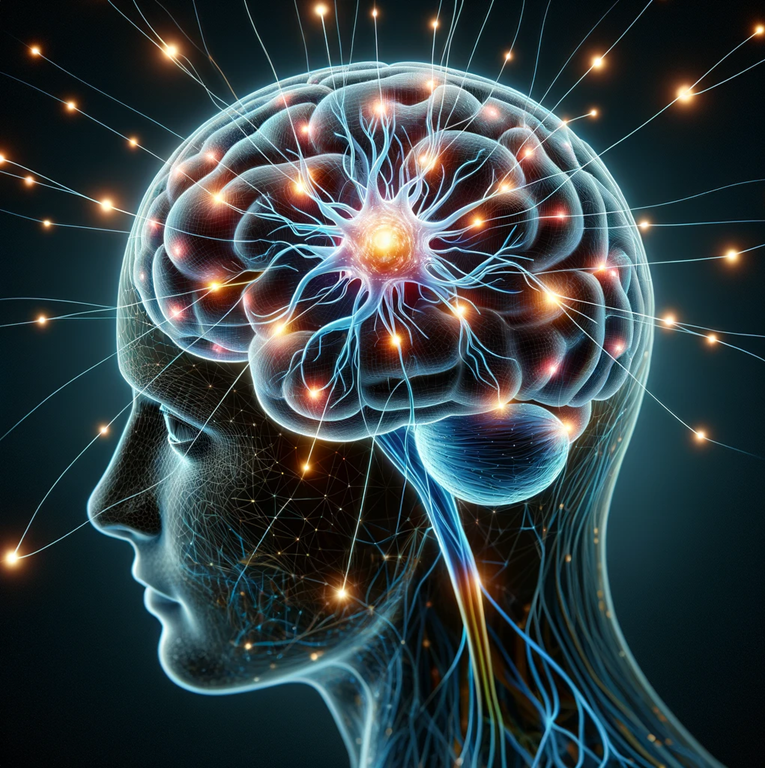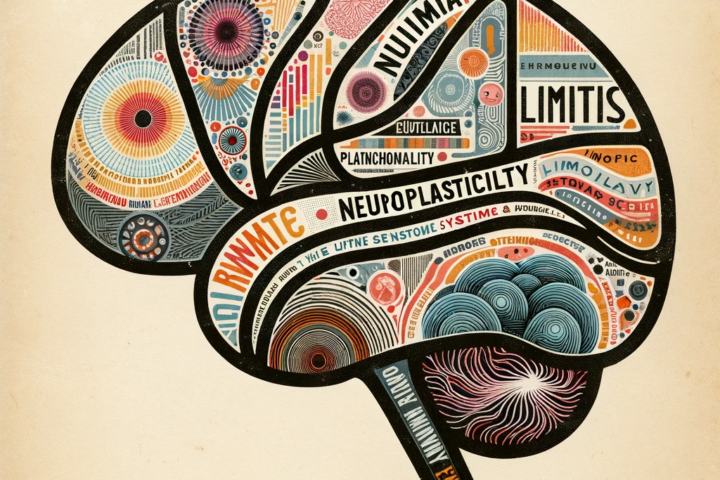Understanding Brainwaves: The Symphony of the Mind
In the intricate dance of neuroscience, brainwaves play a leading role. They are not some New Age concept or a sci-fi fantasy; they are as real as the neurons firing away in our brains right now. Brainwaves are rhythmic electrical impulses generated by neuronal activity in the brain. Think of them as the background music to the movie of your life, constantly changing to reflect your emotions, thoughts, and actions.
Types of Brainwaves:
- Delta Waves (0.5-3 Hz): The slow-mo of brainwaves, mostly found in deep sleep.
- Theta Waves (3-8 Hz): The dreamy ones, present in light sleep and deep relaxation.
- Alpha Waves (8-12 Hz): The chill waves, dominating during calm, relaxed, yet alert states.
- Beta Waves (12-30 Hz): The busy bees, associated with active, logical thought and focus.
- Gamma Waves (30 Hz and above): The high-frequency waves linked to high-level information processing and insight.
Each type of brainwave plays a role in how we experience the world. Like a well-orchestrated symphony, they work in harmony to ensure our brains function optimally.
What is Mental Trauma?
Mental trauma is like a psychological earthquake. It’s the mind’s response to an event, series of events, or set of circumstances that is physically or emotionally harmful or life-threatening. Trauma can leave lasting adverse effects on an individual’s mental, physical, social, emotional, or spiritual well-being.
The Impact of Trauma:
Trauma can result from various experiences – from a single, life-threatening event to prolonged, chronic abuse. Its impact can be immediate or delayed, lasting for years, often leading to conditions like PTSD (Post-Traumatic Stress Disorder).
How Does Mental Trauma Affect Brainwaves?
Mental trauma can jumble up the brain’s usual rhythm. When trauma hits, it’s like throwing a rock into the calm waters of the brain, creating ripples that disrupt the normal flow of brainwaves. This disruption can lead to brainwave patterns that are irregular or out of sync with what we would expect in certain emotional or cognitive states.
The Disruption of Harmony:
- Heightened Beta Waves: During and after traumatic events, there’s often an over-activation of beta waves, which can lead to anxiety, restlessness, and constant alertness.
- Suppressed Alpha and Theta Waves: Trauma can suppress the more relaxed and restorative brainwaves, making it hard to find calm and peace.
The Vicious Cycle of Misaligned Brainwaves and Trauma
Misaligned brainwaves can exacerbate the psychological impact of trauma. It’s a vicious cycle: trauma affects brainwave patterns, and these altered patterns can deepen the impact of trauma, making recovery more challenging.
Perpetuating the Trauma Response:
- Prolonged Stress Response: Misaligned brainwaves can keep the body in a prolonged state of stress, making it difficult to ‘switch off’ the fight-or-flight response.
- Impaired Cognitive Function: Disrupted brainwave patterns can affect concentration, memory, and decision-making, which are crucial for processing and recovering from traumatic experiences.
The Broad Impact of Misaligned Brainwaves on Mental Health
Misaligned brainwaves don’t just sit back and twiddle their thumbs; they actively contribute to various mental health conditions.
Stress, Anxiety, and Depression:
- Stress: A constant state of heightened beta activity can lead to chronic stress.
- Anxiety: Anxiety disorders are often characterized by an overabundance of high-frequency beta waves.
- Depression: Depression has been linked to an imbalance in alpha wave activity, particularly in the left frontal lobe.
OCD and ADHD:
- OCD (Obsessive-Compulsive Disorder): OCD is associated with increased beta activity, reflecting a state of heightened alertness and rumination.
- ADHD (Attention Deficit Hyperactivity Disorder): ADHD is often characterized by an imbalance in theta and beta waves, affecting focus and attention.
The Continuous Stress of Survival Mode on Brainwaves
Living in constant survival mode is like having an alarm system that never shuts off. It keeps the brain in a perpetual state of high alert, reflected in abnormal brainwave patterns.
The Toll on the Brain:
- Overactive Beta Waves: Continuous stress keeps the brain in a state of hyper-alertness, leading to an overproduction of beta waves.
- Suppressed Restorative Waves: The necessary alpha and theta waves, crucial for relaxation and healing, are often suppressed.
Dysregulated Limbic Systems and Brainwaves Affecting Physical Health
Our limbic system, the emotional center of the brain, can go awry when our brainwaves are out of sync. This dysregulation can have a profound impact on our physical health.
The Body-Brain Connection:
- Immune System: Chronic stress can weaken the immune system, making us more susceptible to illness.
- Sleep Disturbances: Altered brainwave patterns can disrupt sleep, crucial for physical health and healing.
- Hormonal Imbalance: Dysregulation in the limbic system and brainwaves can lead to hormonal imbalances, affecting everything from mood to metabolism.
Conclusion: The Interconnectedness of Brainwaves, Mental Trauma, and Health
In conclusion, the relationship between brainwaves, mental trauma, and our overall health is intricate and profound. Understanding this interconnectedness is crucial for effective treatment and healing. As we delve deeper into the world of neuroscience, we gain more tools to realign our brainwaves, heal from trauma, and improve our mental and physical health.
Sources:
For a deeper understanding of these concepts, consider these sources:
- “The Body Keeps the Score: Brain, Mind, and Body in the Healing of Trauma” by Bessel van der Kolk. This book provides an in-depth look at how trauma affects the brain and body.
- “Change Your Brain, Change Your Life” by Daniel G. Amen. Amen’s work delves into the impact of brainwave patterns on mental health conditions.
- “The Neuroscience of Clinical Psychiatry: The Pathophysiology of Behavior and Mental Illness” by Edmund S. Higgins. This book offers a comprehensive overview of the neuroscience behind various mental health conditions.


